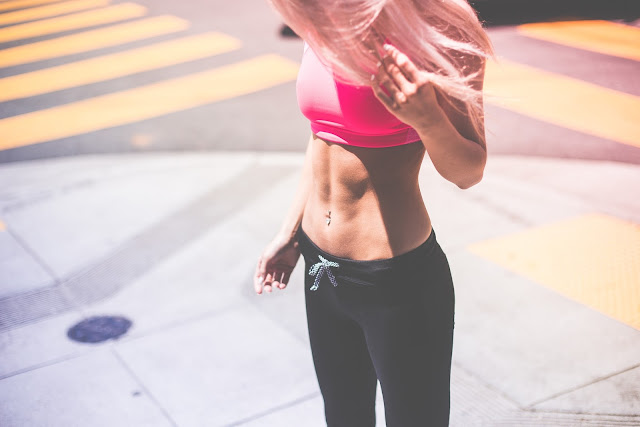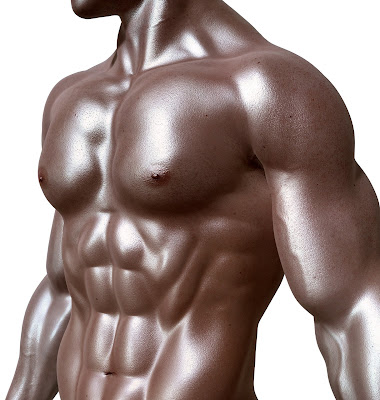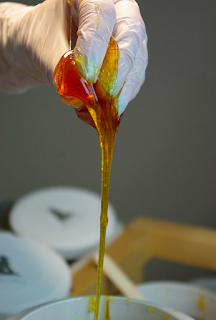#Fitspiration: Harmful or Helpful?
 A new health and fitness trend has recently swept social media. Images, text and videos labelled #Fitspiration - a literal amalgamation of the words fitness and inspiration – are ostensibly designed to inspire fitness among those who create, share and view them. As of 9th October 2017, over 13 million images labelled as #fitspiration had been posted to popular image-focused social media site Instagram. This figure has risen dramatically from the 1.8 million images that had been posted in January 2014, when my colleague Nova Deighton-Smith and I first became interested in it. Though the promotion of physical fitness is universally acknowledged as a positive and worthwhile pursuit, as a means of enhancing our physical and psychological health, concerns have been raised about the potentially problematic nature of #fitspiration content, especially in relation to body image. The question is posed: Is #fitspiration more harmful than helpful?
A new health and fitness trend has recently swept social media. Images, text and videos labelled #Fitspiration - a literal amalgamation of the words fitness and inspiration – are ostensibly designed to inspire fitness among those who create, share and view them. As of 9th October 2017, over 13 million images labelled as #fitspiration had been posted to popular image-focused social media site Instagram. This figure has risen dramatically from the 1.8 million images that had been posted in January 2014, when my colleague Nova Deighton-Smith and I first became interested in it. Though the promotion of physical fitness is universally acknowledged as a positive and worthwhile pursuit, as a means of enhancing our physical and psychological health, concerns have been raised about the potentially problematic nature of #fitspiration content, especially in relation to body image. The question is posed: Is #fitspiration more harmful than helpful?At the heart of #Fitspiration criticism, lie concerns about the unrealistic body types that are ubiquitous across social media #fitspiration posts (Deighton-Smith & Bell, 2017). The majority of women featured in #fitspiration content have the same idealised body type that is unrealistically thin yet muscular, with pert breasts and buttocks. Though less prevalent, the men of #fitspiration similarly conform to an unrealistic ideal body type that is hyper-muscular yet lean. Other markers of Western beauty – e.g. clear skin, white teeth and glossy hair - are also duly present. Just as research has shown that viewing idealised unrealistic bodies in mainstream media (e.g. fashion magazines and music videos) can cause body image disturbance, preliminary evidence suggests engaging with #fitspiration content can have similarly detrimental effects (Tiggemann & Zaccardo, 2015).
 Though #fitspiration is designed to inspire fitness, muscular bodies featured within #fitspiration posts are rarely shown to be actively engaged in physical activity (Deighton-Smith & Bell, 2017). Instead, they are shown in static posed ways that emphasise physical appearance and sex appeal, e.g. women are often shown in skimpy sportswear or lingerie to reveal their toned abs, cleavage and legs, whereas men tend to reveal their upper torso. Weight stigma is also rife: overweight bodies are featured only in negative way, e.g. as the “before” shot of a fitness transformation or as a source of humour. Those critical of #fitspiration are labelled “haters” and are often portrayed as jealous and in need of exercise to lose weight themselves. The desirability and attractiveness of the #fitspiration body is further emphasised through slogans such as “fit is sexy” and “strong is the new sexy”. Such ‘motivational’ slogans are regularly emblazoned across #fitspiration images, drawing attention to the appearance of the #fitspiration body and away from its functionality.
Though #fitspiration is designed to inspire fitness, muscular bodies featured within #fitspiration posts are rarely shown to be actively engaged in physical activity (Deighton-Smith & Bell, 2017). Instead, they are shown in static posed ways that emphasise physical appearance and sex appeal, e.g. women are often shown in skimpy sportswear or lingerie to reveal their toned abs, cleavage and legs, whereas men tend to reveal their upper torso. Weight stigma is also rife: overweight bodies are featured only in negative way, e.g. as the “before” shot of a fitness transformation or as a source of humour. Those critical of #fitspiration are labelled “haters” and are often portrayed as jealous and in need of exercise to lose weight themselves. The desirability and attractiveness of the #fitspiration body is further emphasised through slogans such as “fit is sexy” and “strong is the new sexy”. Such ‘motivational’ slogans are regularly emblazoned across #fitspiration images, drawing attention to the appearance of the #fitspiration body and away from its functionality.Motivational messages in #fitspiration content may inadvertently encourage unhealthy attitudes to exercise (Deighton-Smith & Bell, 2017). Those who engage with #fitspiration are encouraged to push their bodies beyond their physical limits (“Unless you puke, faint, or die, keep going”) and ignore pain (“Sore is the most satisfying feeling”) creating risk of injury. This ‘all or nothing’ attitude to exercise may alienate novice exercisers and create guilt post-exercise among those who feel they didn’t push themselves hard enough. Furthermore, many messages frame physical activity as being the sole responsible of the individual, ignoring the many structural inequalities that can prevent sport and exercise participation. The problematic health messages of #fitspiration are not restricted to exercise. Dietary messages that encourage calorie restriction, binge eating (so-called “cheat meals”), and create diet-related guilt (e.g. for not eating the right “clean” kinds of food) are also common in #fitspiration content, leading to comparisons being drawn to pro-anorexia #thinspiration content (Boepple & Thompson, 2016).
The prognosis for #fitspiration is not all bad. A recent study found that exposure to motivational slogans that focus on self-love, without #fitspiration bodies being present, can boost body image and encourage self-compassion among viewers (Slater, Varsani & Diedrichs, 2017). Furthermore, my own research found that #fitspiration content can foster a sense of belonging to a pro-exercise community. Taken together, these findings suggest there is scope to reclaim #fitspiration as a genuinely positive environment for inspiring physically activity. But in order to achieve this, it would need to be made-over to eliminate the problematic objectifying, appearance-focused beliefs at its core. Diverse body types actively engaging in physical activity could replace the statically posed and unrealistic #fitspiration ideal, and positive messages that foster intrinsic motivations for exercise could replace the problematic appearance-focused slogans that define the current trend.
Beth T. Bell (York St John University) is a Senior Lecturer in Psychology at York St John University. Her research examines the role of media, social media and technology in the transmission of dominant consumer culture values (i.e. appearance ideal and materialistic messages) and the impact of such values on the self-perception, body image and health behaviour of individuals.
References



Comments
Post a Comment